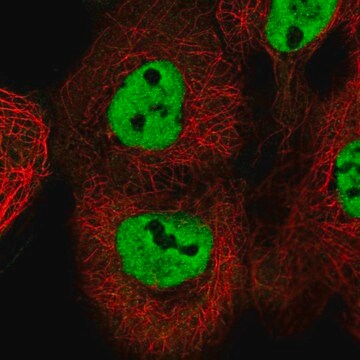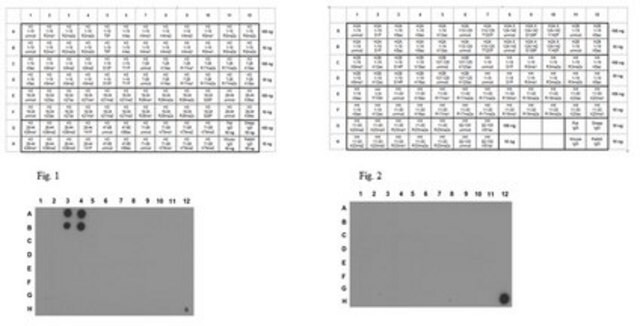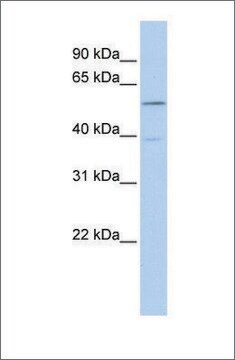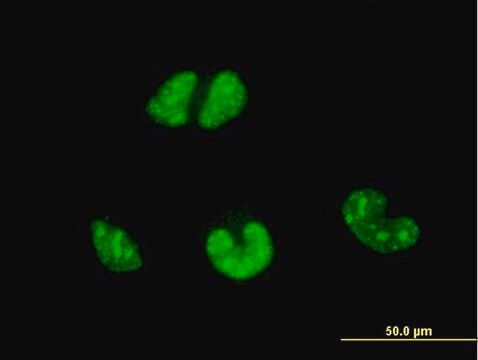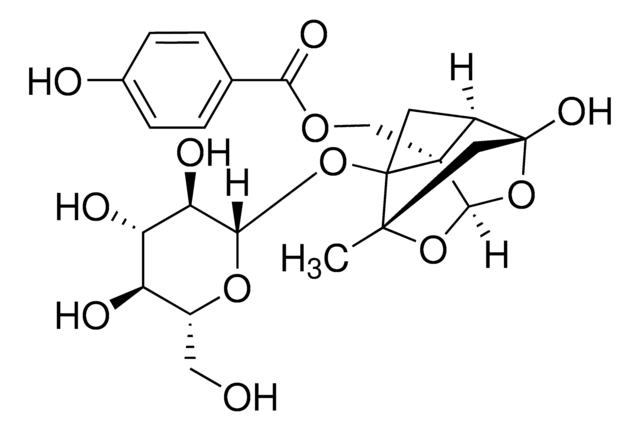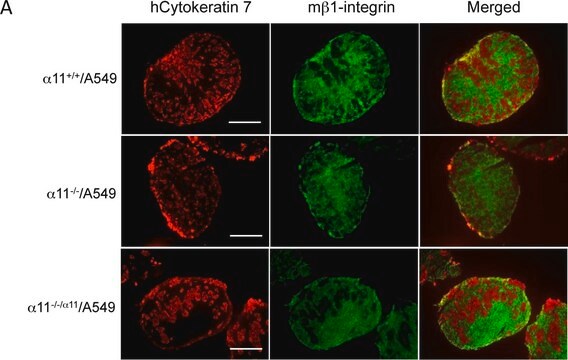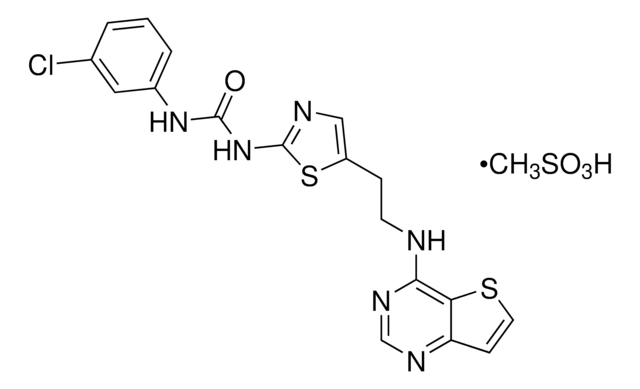推薦產品
生物源
rabbit
品質等級
共軛
unconjugated
抗體表格
affinity isolated antibody
抗體產品種類
primary antibodies
無性繁殖
polyclonal
形狀
buffered aqueous solution
分子量
59 kDa
物種活性
mouse, human, pig, bovine, rat
濃度
0.5 mg - 1 mg/mL
技術
western blot: suitable
NCBI登錄號
UniProt登錄號
運輸包裝
wet ice
儲存溫度
−20°C
目標翻譯後修改
unmodified
基因資訊
human ... ESR2(2100)
一般說明
ESR2 is a nuclear transcription factor that belongs to the estrogen receptor family. ESR2 polymorphisms have been linked to anorexia nervosa, blood pressure, breast cancer and endometrial tumors.
Rabbit Anti-ESR2 antibody recognizes canine, human, mouse, rat, pig, and bovine ESR2.
Rabbit Anti-ESR2 antibody recognizes canine, human, mouse, rat, pig, and bovine ESR2.
免疫原
Synthetic peptide directed towards the N terminal region of human ESR2
應用
Rabbit Anti-ESR2 antibody can be used for western blot applications at a dilution of 1μg/ml.
生化/生理作用
ESR2 is a member of the family of estrogen receptors and superfamily of nuclear receptor transcription factors. The gene product contains an N-terminal DNA binding domain and C-terminal ligand binding domain and is localized to the nucleus, cytoplasm, and mitochondria. Upon binding to 17beta-estradiol or related ligands, the encoded protein forms homo- or hetero-dimers that interact with specific DNA sequences to activate transcription. Some isoforms dominantly inhibit the activity of other estrogen receptor family members. Several alternatively spliced transcript variants of this gene have been described, but the full-length nature of some of these variants has not been fully characterized.
序列
Synthetic peptide located within the following region: TPGHLSPLVVHRQLSHLYAEPQKSPWCEARSLEHTLPVNRETLKRKVSGN
外觀
Purified antibody supplied in 1x PBS buffer with 0.09% (w/v) sodium azide and 2% sucrose.
免責聲明
Unless otherwise stated in our catalog or other company documentation accompanying the product(s), our products are intended for research use only and are not to be used for any other purpose, which includes but is not limited to, unauthorized commercial uses, in vitro diagnostic uses, ex vivo or in vivo therapeutic uses or any type of consumption or application to humans or animals.
未找到適合的產品?
試用我們的產品選擇工具.
儲存類別代碼
10 - Combustible liquids
水污染物質分類(WGK)
WGK 3
閃點(°F)
Not applicable
閃點(°C)
Not applicable
H Eastwood et al.
Molecular psychiatry, 7(1), 86-89 (2002-01-23)
There is significant evidence for genetic factors in the susceptibility to anorexia nervosa (AN). Previously genetic variation in the estrogen receptor 2 gene (ESR2) has been studied, however no strong evidence of association with AN has been found. In the
Veronica Wendy Setiawan et al.
Cancer causes & control : CCC, 15(6), 627-633 (2004-07-29)
We hypothesized that variations in the ESR2 gene may influence estrogen exposure in the uterus and thus influence endometrial cancer risk. We validated and screened for variants in the ESR2 gene and examined whether they are associated with endometrial cancer
Paula Maguire et al.
Breast cancer research and treatment, 94(2), 145-152 (2005-11-02)
Estrogen is involved in both normal mammary development and in breast carcinogenesis. A family history of disease and exposure to estrogen are major risk factors for developing breast cancer. Estrogen exerts its biological effects through binding to the estrogen receptors
S Ogawa et al.
Journal of human genetics, 45(6), 327-330 (2001-02-24)
We investigated the association between a dinucleotide (cytosine-adenine; CA) repeat polymorphism located in the flanking region of the human estrogen receptor beta (ESR2) gene and systemic blood pressure in 187 healthy postmenopausal Japanese women. The genotype was classified as "A"
Nagham Asp et al.
Biochimica et biophysica acta, 1843(9), 1987-1996 (2014-04-22)
The ErbB3 receptor is an important regulator of cell growth and carcinogenesis. Among breast cancer patients, up to 50-70% have ErbB3 overexpression and 20-30% show overexpressed or amplified ErbB2. ErbB3 has also been implicated in the development of resistance to
我們的科學家團隊在所有研究領域都有豐富的經驗,包括生命科學、材料科學、化學合成、色譜、分析等.
聯絡技術服務